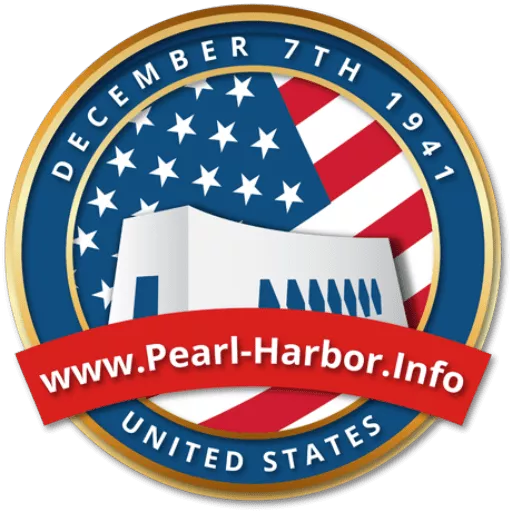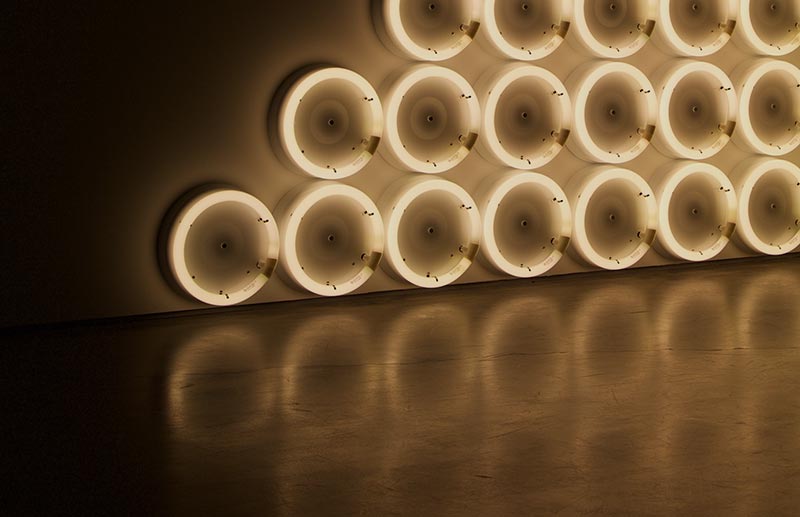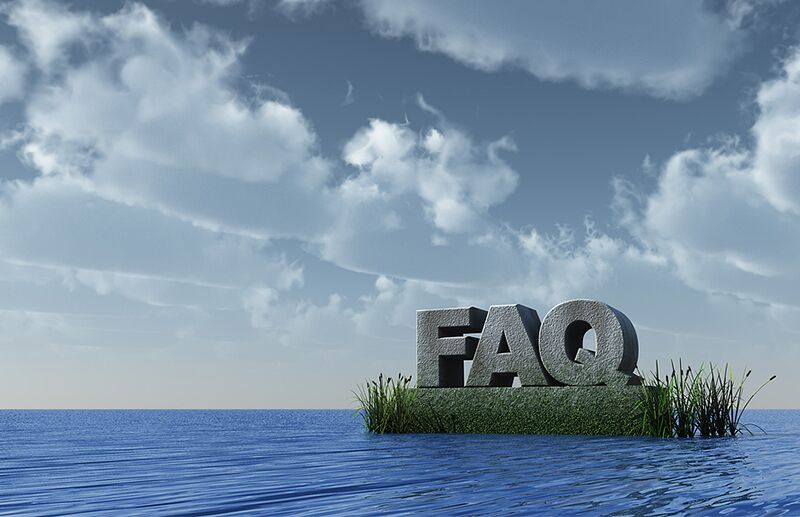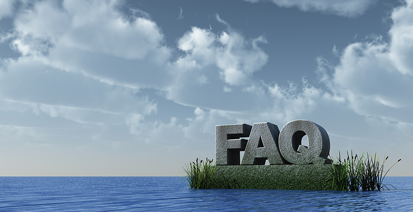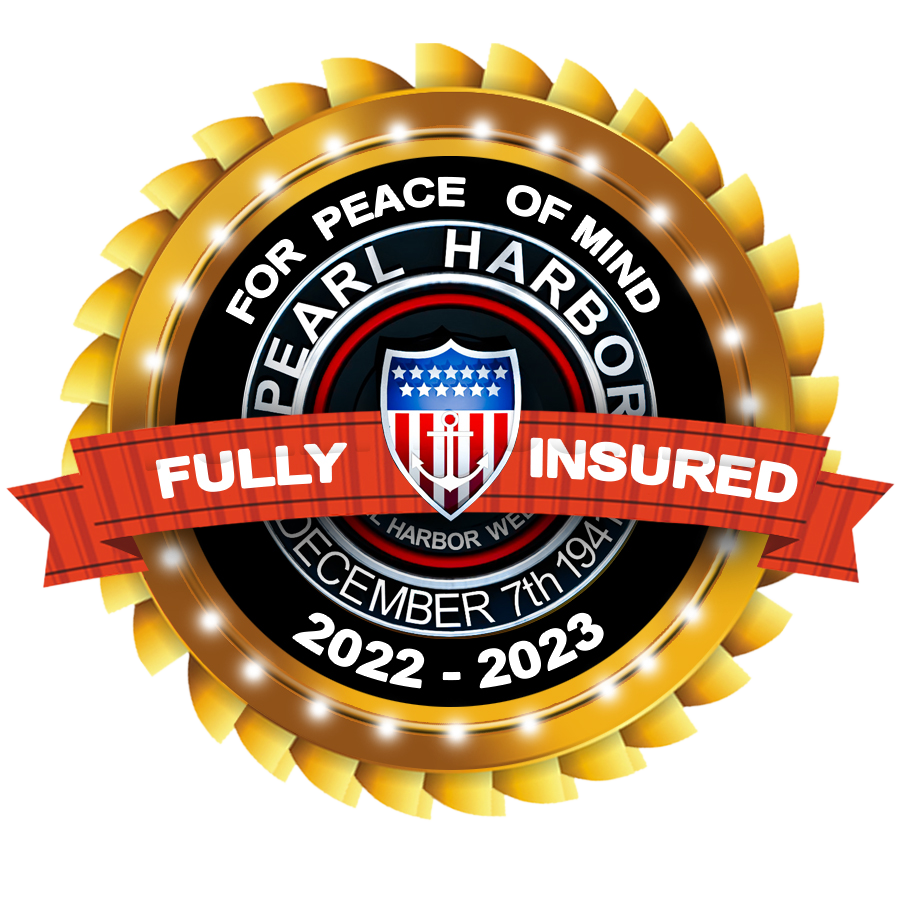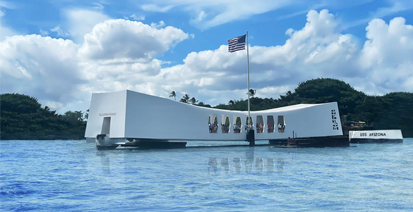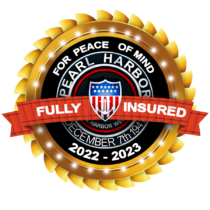History Of The Battleship Arizona (BB-39)
Soon after the State of Arizona became the 48th State of the Union, Congress commissioned the building of the Battleship Arizona. The battleship USS Arizona was built between 1914-1915 at the Naval Yard in Brooklyn, New York; she was the second and the last ship in the Pennsylvania-class of superdreadnought battleships to be built.
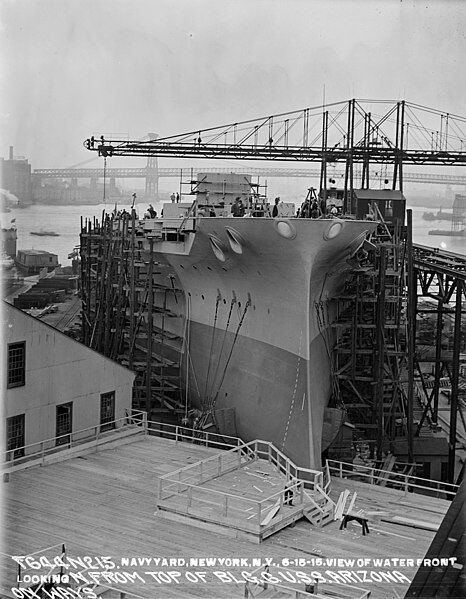
USS Arizona (BB 39), seen from the top of the New York Navy Yard's Building 6 on 15 June 1915. What is probably a christening platform is under construction. 181-6038121, Unknown author, US Naval History and Heritage Command, PD-USGov
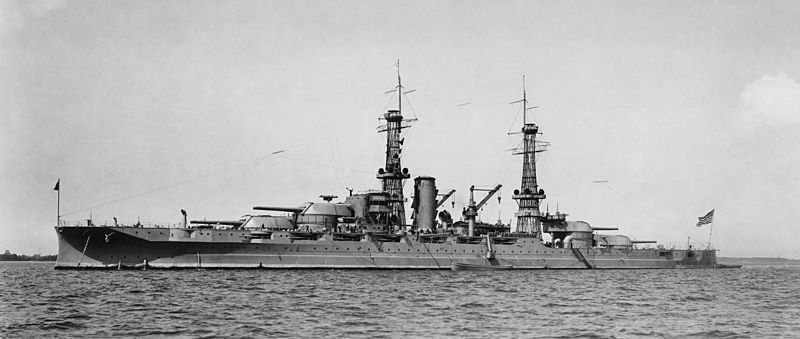
Battleship Arizona (BB39) port bow, before being modernized at Norfolk Naval Shipyard between May 1929 and January 1930, Photographer: Unknown, Retouched by: Mmxx, File:Arizona (BB39) Port Bow, Underway – NARA – 5900075 – 1930.tif, PD-USGov
Launched in 1916, with Captain John D. McDonald in command, she operated in the Atlantic and sailed to France, the Mediterranean, the Caribbean, and Peru. Her first deployment was in 1919 when she was sent to Turkey to represent the US interest during the Greco-Turkish War, and a few years later, the USS Arizona Battleship was reassigned to the Pacific Fleet command.
Modernization of the USS Arizona
Between 1929-1931, the Battleship Arizona was sent to the shipyard for a comprehensive modernization. Among the various improvements, some notable ones were; she received a heavier deck armor, a new superstructure with improved fire control systems, torpedo protection, her secondary armament layout was revised, her cage masts were replaced with torpedo masts, and her main battery guns had their elevation improved for a greater range. She came out of her modernization as a very formidable ship for her time.
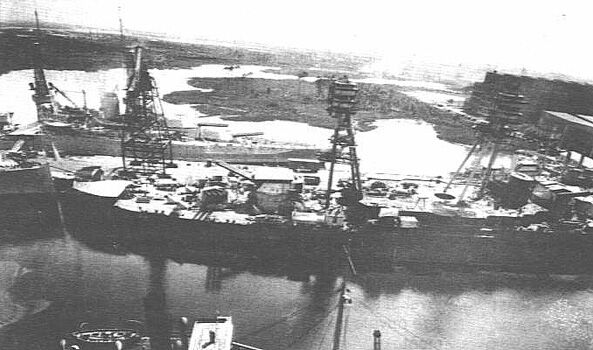
The U.S. Navy battleship USS Arizona (BB-39) at the Norfolk Naval Shipyard, Virginia (USA), on 3 June 1930. The battleship was one of several worked on here during the Battleship Modernization Program in the 1930s. In the photograph, the ship’s superstructure has been removed and new masts have been installed., USN, Official U.S. Navy photo [1] from the U.S. Navy Norfolk Naval Shipyard, PD-USGov
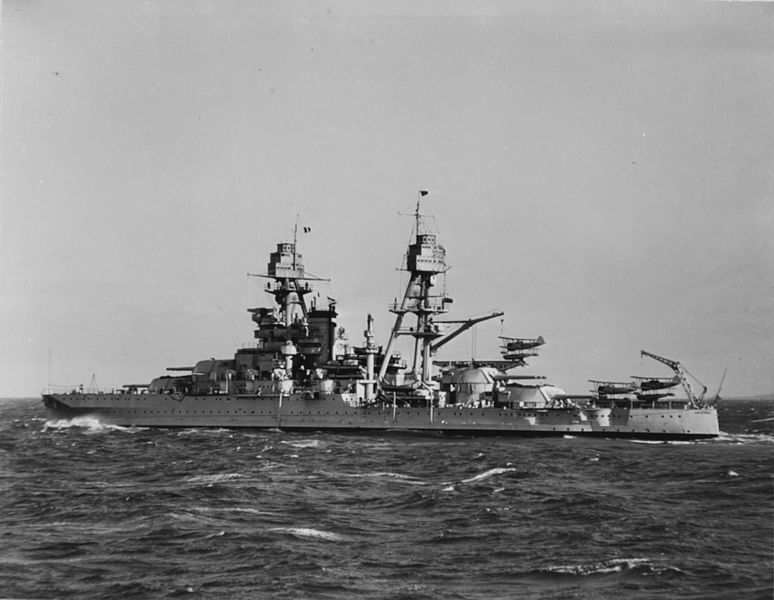
Battleship USS Arizona (BB-39), NH 57665, U.S. Navy, http://www.history.navy.mil/our-collections/photography/us-navy-ships/battleships/arizona-bb-39/NH-57665.html, PD-USGov
Moved to the Pacific Fleet
When an earthquake struck Long Beach, California, on March 10, 1933, the Battleship Arizona and her crew were assigned to assist in providing aid to the survivors. In 1934, she became the backdrop of the famous Hollywood movie “Here Comes the Navy.” Then in 1940, the Pacific Fleet and the Battleship Arizona were reassigned from San Diego to Honolulu due to the Japanese unrelenting military aggression in Asia.
Battleship row was constructed off the southeastern side of Ford Island to accommodate the Pacific Fleet’s eight massive battleships that came to Pearl Harbor. Due to Ford Island’s location, being in the middle of Pearl Harbor, where the water was the deepest, it could accommodate the largest of the Battleships. This also allowed the Navy to double up Battleships, side by side, tied to a large Mooring Quays just off the shore of Ford Island. For access, wooden planks spanned between the two Battleships and Ford Island. Unfortunately, this doubling up of the ships made them easier targets for an enemy attack. However, at the time, the US Navy felt the Battleships were safe from enemy attacks because the harbor was too shallow for torpedoes, and no one dreamed of an aircraft carrier attack on Hawaii. Unknown to the US military, the Japanese Navy had modified their torpedoes for shallow water attacks and tested them secretly for over a year in Japan.
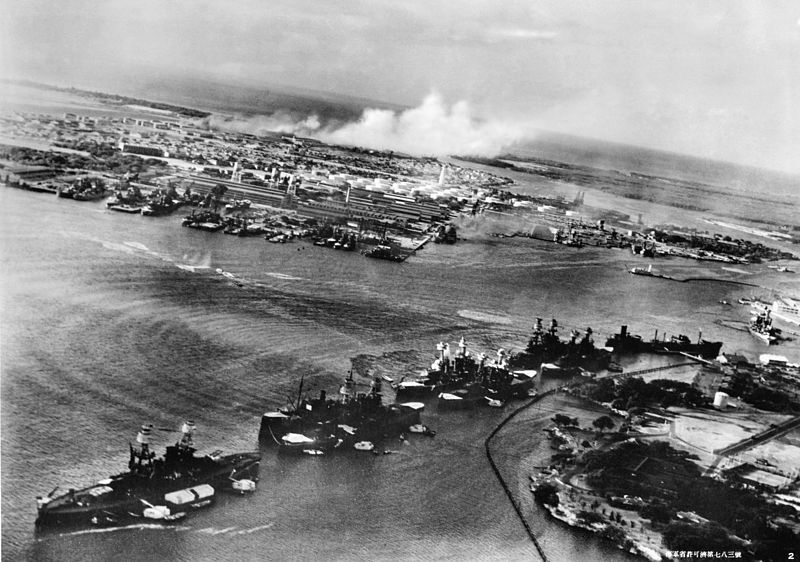
Torpedo planes attack “Battleship Row” at about 0800 on 7 December, seen from a Japanese aircraft. Ships are, from lower left to right: USS Nevada (BB-36) with flag raised at stern; USS Arizona Battleship (BB-39) with USS Vestal (AR-4) outboard; USS Tennessee (BB-43) with USS West Virginia (BB-48) outboard; USS Maryland (BB-46) with USS Oklahoma (BB-37) outboard; USS Neosho (AO-23) and USS California (BB-44). West Virginia, Oklahoma and California have been torpedoed, as marked by ripples and spreading oil, and the first two are listing to port. Torpedo drop splashes and running tracks are visible at left and center. White smoke in the distance is from Hickam Field. Grey smoke in the center middle distance is from the torpedoed USS Helena (CL-50), at the Navy Yard’s 1010 dock. Japanese writing in lower right states that the image was reproduced by authorization of the Navy Ministry. , Unknown author, National Archives and Records Administration, cataloged under the National Archives Identifier (NAID) 520600, PD-USGov
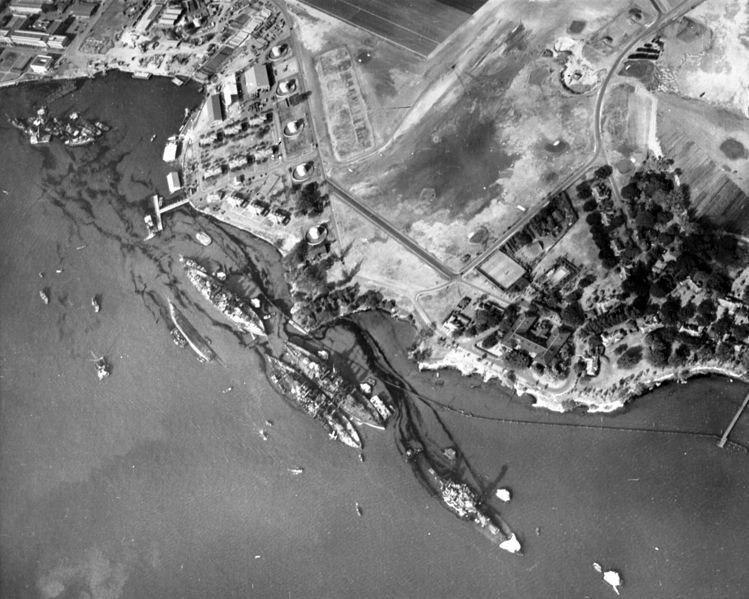
Aerial view of “Battleship Row” moorings at Pearl Harbor on the southern side of Ford Island, 10 December 1941, showing damage from the Japanese raid three days earlier. In upper left is the sunken USS California (BB-44), with smaller vessels clustered around her. Diagonally, from left center to lower right are: USS Maryland (BB-46), lightly damaged, with the capsized USS Oklahoma (BB-37) outboard. A barge is alongside Oklahoma, supporting rescue efforts. USS Tennessee (BB-43), lightly damaged, with the sunken USS West Virginia (BB-48) outboard. Battleship USS Arizona (BB-39), sunk, with her hull shattered by the explosion of the magazines below the two forward turrets. Note dark oil streaks on the harbor surface, originating from the sunken battleships., USN, Official U.S. Navy photograph 80-G-387565, PD-USGov
Dec 7, 1941
The Japanese sneak attack on Oahu occurred early on a Sunday morning, Dec 7, 1941, and was a complete surprise to Oahu’s military bases and the 136 vessels docked at Pearl Harbor. The goal of Japan was to destroy all the airfields and aircraft on Oahu and then attack the US Navy’s two aircraft carriers and eight battleships stationed at Pearl Harbor. However, the aircraft carriers had recently left Pearl Harbor for maneuverers, and only the Battleships remained in port. Consequently, the full might of the Japanese attack was concentrated on Battleship Row.
Armor Piercing Bomb Explodes in the Battleship USS Arizona ‘s Ammunition Compartment
An armor-piercing bomb soon hit the USS Arizona Battleship in her magazine compartment. The explosion was so powerful that it lifted the ship, breaking the hull in two, and instantly killing 1,177 officers, sailors, and marines. Unlike the other battleships on Battleship Row, the battleship USS Arizona could not be salvaged, although the Navy did remove some of her big guns.
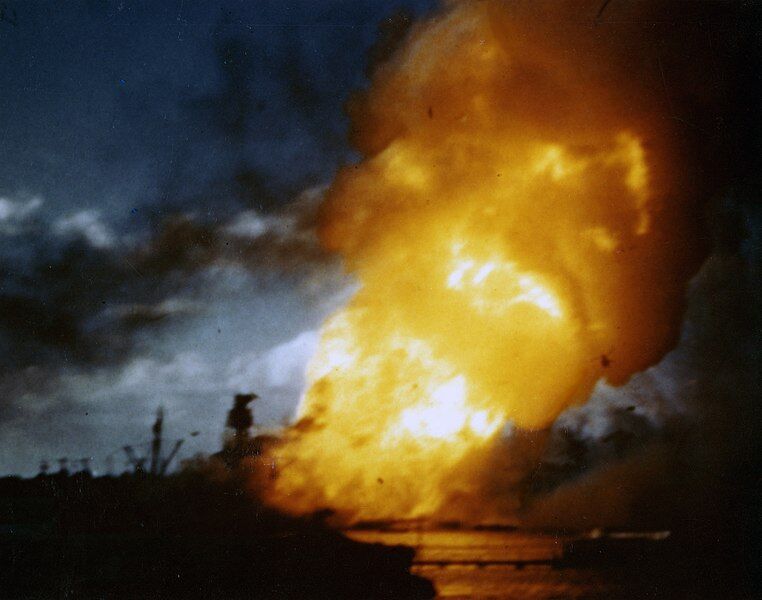
The U.S. Navy battleship USS Arizona (BB-39) ablaze at Pearl Harbor, immediately following the explosion of her forward magazines, on 7 December 1941, U.S. Navy (frame clipped from a color motion picture taken from on board USS Solace (AH-5), Official U.S. Navy photograph 80-G-K-13512, PD-USGov
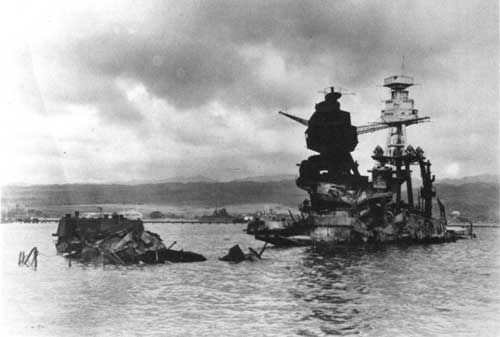
The wreck of the Arizona battleship from port bow looking aft., Author unknown, Courtesy of the en:National Park Service (specifically here), PD-USGov
The wreckage of the sunken Battleship Arizona and its crew remain on the bottom of the harbor, and the ship is still leaking oil over 80 years later. In 1962, the Memorial was built above the Battleship Arizona to honor all those crewmembers that died. The Memorial was intentionally designed to straddle the Battleship out of respect and honor for its crew but does not touch it.
